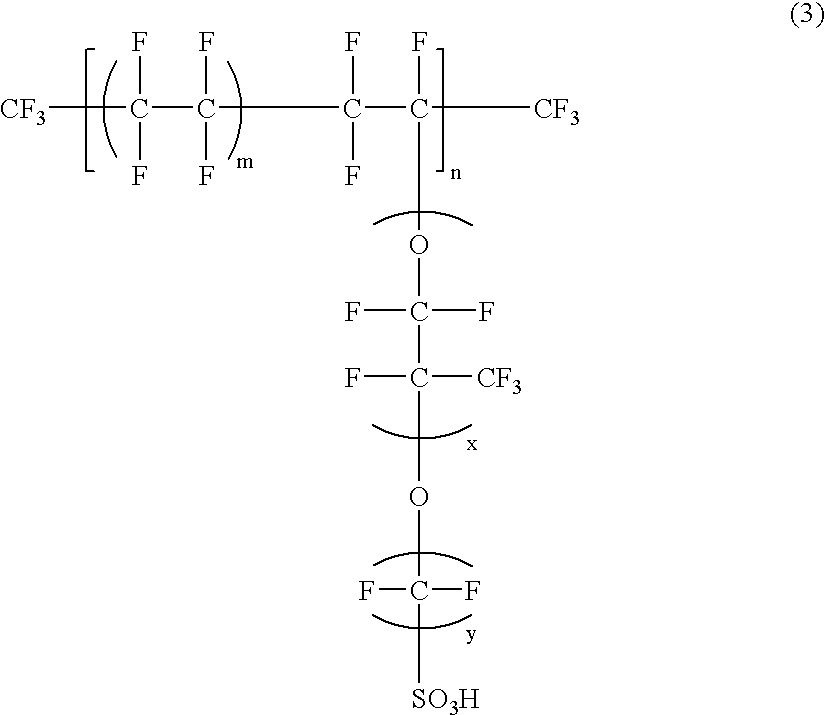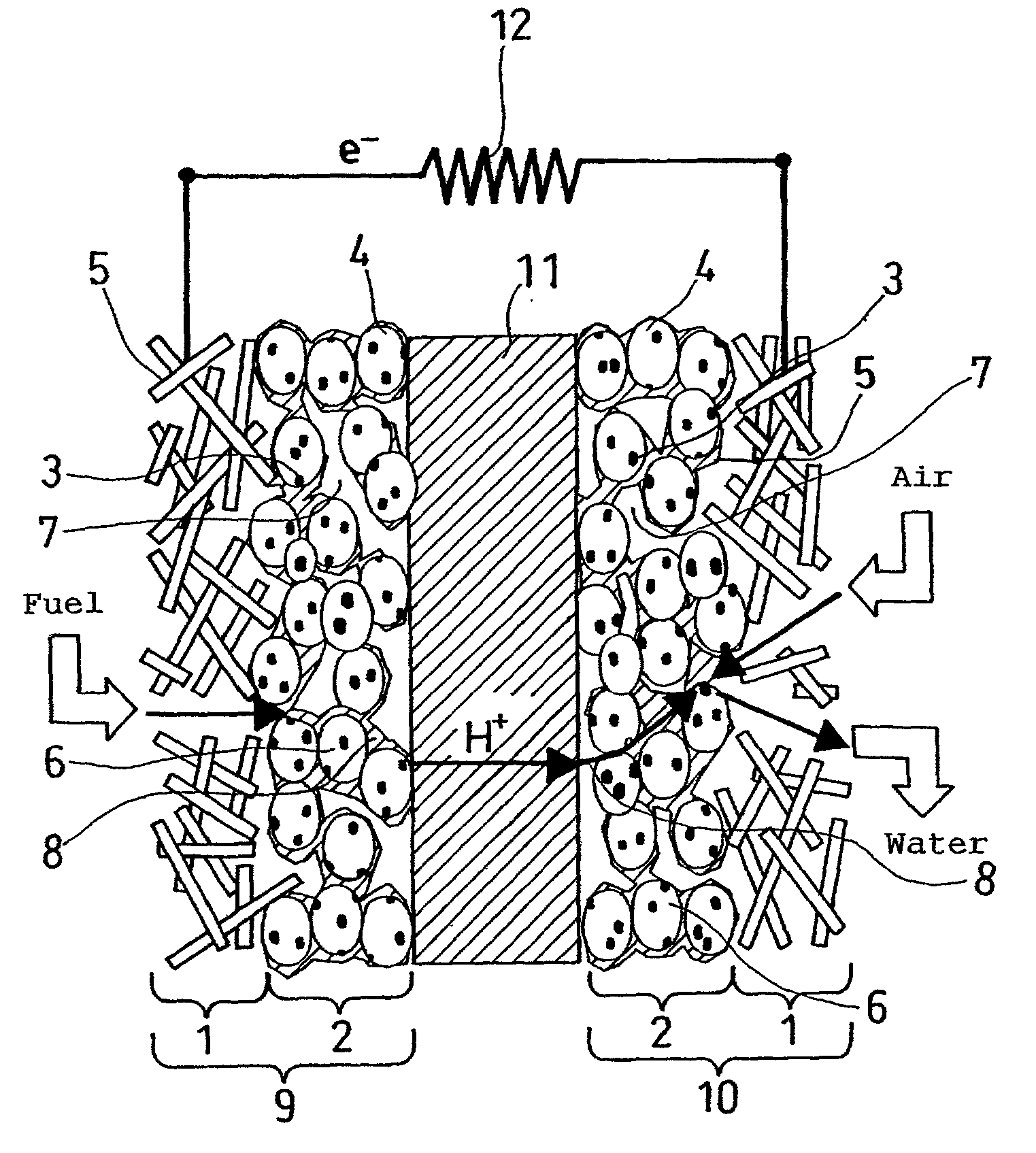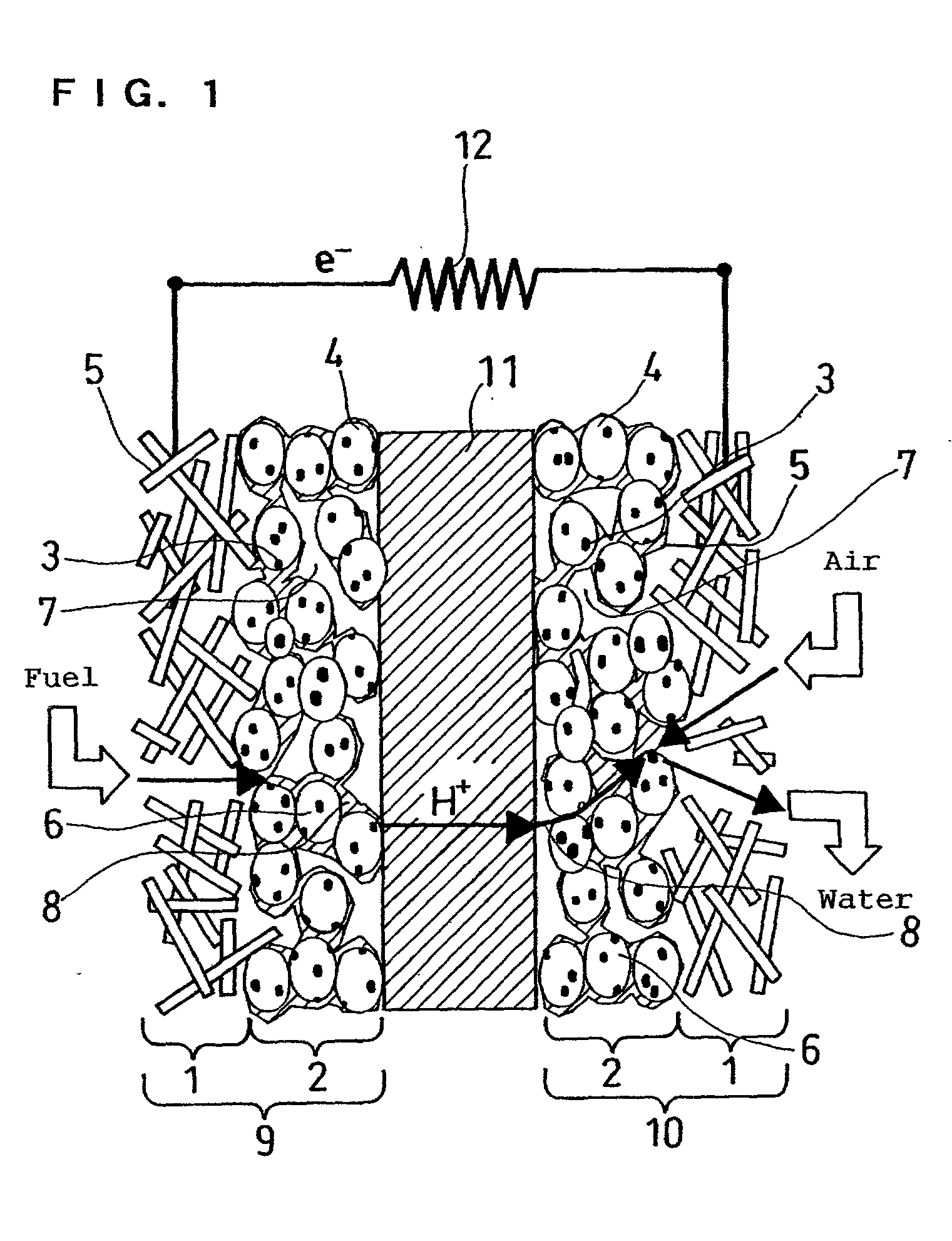Polyelectrolyte fuel cell and production method therefor
- Summary
- Abstract
- Description
- Claims
- Application Information
AI Technical Summary
Benefits of technology
Problems solved by technology
Method used
Image
Examples
example 2
[0098] A membrane-catalyst layer assembly was formed by applying the same catalyst layer ink as in Example 1 on both surfaces of a polymer electrolyte membrane (Nafion 112 membrane manufactured by E.I. du Pont de Nemours and Company). Subsequently, cell B was assembled in the same manner as in Example 1, except that a gas diffusion layer carbon paper (Carbon Paper TGPH-060 manufactured by Toray Industries, Inc.) was integrally joined to both surfaces of this membrane-catalyst layer assembly by application of a pressure of 4 MPa / cm.sup.2 at 150.degree. C. to form a membrane-electrode assembly.
example 3
[0099] A catalyst layer was formed by applying the same catalyst layer ink as in Example 1 on a surface of a transfer film made of polypropylene. This catalyst layer was transferred to both surfaces of a polymer electrolyte membrane ("GORESELECT membrane" manufactured by Japan Gore-Tex Inc.) by application of a pressure of 2 MPa / cm.sup.2 at 130.degree. C. to prepare a membrane-catalyst layer assembly. A gas diffusion layer carbon paper (Carbon Paper TGPH-060 manufactured by Toray Industries, Inc.) was integrally joined to both of the catalyst layers of this membrane-catalyst layer assembly by application of a pressure. Thus, a membrane-electrode assembly was formed, and cell C was assembled.
example 4
[0100] Cell D was assembled by forming a membrane-electrode assembly in the same manner as in Example 1, except that ketjen black (Ketjen Black EC60OJD manufactured by Ketjen Black International Co.) having a specific surface area of 1270 m.sup.2 / g and an oil adsorption of 495 ml / 100 g was used as the second carbon particles.
PUM
| Property | Measurement | Unit |
|---|---|---|
| Length | aaaaa | aaaaa |
| Length | aaaaa | aaaaa |
| Particle size | aaaaa | aaaaa |
Abstract
Description
Claims
Application Information
 Login to View More
Login to View More - R&D
- Intellectual Property
- Life Sciences
- Materials
- Tech Scout
- Unparalleled Data Quality
- Higher Quality Content
- 60% Fewer Hallucinations
Browse by: Latest US Patents, China's latest patents, Technical Efficacy Thesaurus, Application Domain, Technology Topic, Popular Technical Reports.
© 2025 PatSnap. All rights reserved.Legal|Privacy policy|Modern Slavery Act Transparency Statement|Sitemap|About US| Contact US: help@patsnap.com



